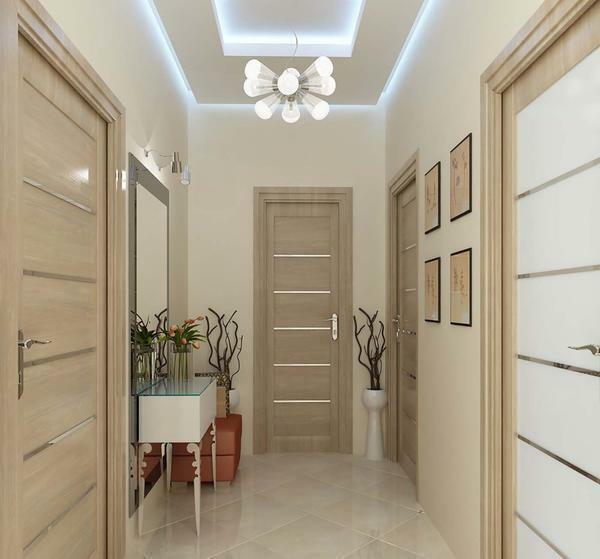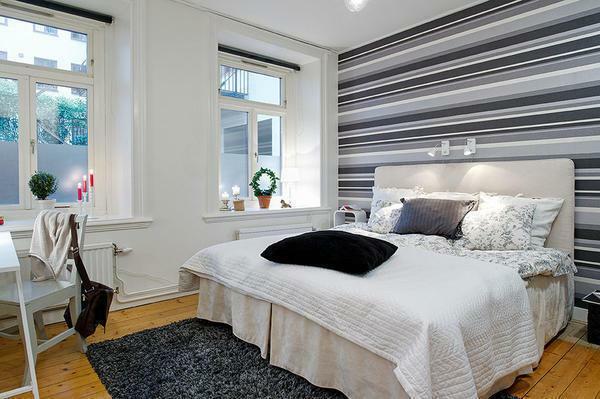Contents
- 1 Why do joints appear on wallpaper?
- 1.1 Quantity of glue
- 1.2 Pruning
- 2 How to fix such defects?
- 2.1 Bubbles and places that have become unstuck
- 2.2 Method of gluing joints
- 2.3 Sufficient moistening
- 2.4 EmeryTING
- 2.5 Pads and inserts
- 2.6 Paper borders
When carrying out repair work, everyone imagines that the result will be a beautiful,apartment. And in many ways it depends on the quality of the wallpaper gluing. But often it turns out quite the opposite. The next morning after wallpapering the walls with wallpaper, it appears that they broke up or peeled off at the joints. The first question that is currently interested is how to fix everything and how to glue unfastened wallpaper and joints? This article will describe the causes of such troubles and how to correct them.
Why do joints appear on wallpaper?
Absolutely all wallpaper, regardless of whether they are on paper or textile basis, have the property of swelling when exposed to moisture, in this case glue. And this can be seen even with the naked eye. So, for example, if the wallpaper width is half a meter and it is dampened with glue, they increase by a few millimeters. Consequently, when gluing, nothing is noticeable, and after drying the paper acquires its original appearance. As a result, there are gaps between the sheets and a bare wall is visible. To prevent this from happening, it is not recommended to soak up the used piece of wallpaper. When the sheet is sufficiently wet, it must be immediately glued.
It is important to follow the instructions and give them the time for impregnation which is indicated. To stick on sheets it is necessary to strictly observe time of impregnation of each sheet and to prepare only that quantity which are capable to paste for the identical time interval.
It is very important to properly prepare the wall under the wallpapering of wallpaper and do not forget to primer the surface.
Quantity of glue
Do not apply a lot of glue on the wallpaper. It is necessary to apply such quantity of a binding material that at drying the adhesive mix at first seized, and only then the sheet, instead of on the contrary. Be sure to soak the edges of the wallpaper. In addition, in the places of joints on the wall and in the corners, anoint PVA should also miss and needles. More details about the secrets of the wallpaper sticker.
Pruning
Another reason why the wallpaper from the wall can be peeled off is that the edges of the fabric are unevenly cut. One edge may be darker than the other. Therefore, when purchasing it is necessary to check the series of each roll - they must be the same. It is also worth noting that cheaper wallpapers often have a visible joint.
Take care of the rolls, do not put the rolls upright, this leads to the bending of the edges and stains the ends of the rolls. As a result, the docking becomes fuzzy and the dirt will appear and visually the joint will be visible.
If you take wallpaper with a picture in a box or with a vertical strip, the joints will practically be invisible. Importance also has transportation and storage conditions for purchased wallpapers. Store coils are not recommended without factory packaging, and it is better if they are stored "lying down."
How to fix such defects?
The resulting joints on the wallpaper can be fixed. There are several ways for this. Very comfortable if the wallpaper is under painting. Knocks in this case can be treated with sealant, then paint them under the chosen color of the walls. But such manipulations are best done before painting the wallpaper.
Warning! Experts do not recommend for this use shpatlevku, as in time it will start to crack and will crumble.
Bubbles and places that have come unstuck
To glue neatly the joints of the wallpaper, which in some places have moved away or bubbles, for these purposes we take 5 bottles of syringe. In it we type glue PVA, only it is necessary to check up preliminary its passage through a needle. If necessary, dilute with water. Work on the gluing of wallpaper is done in such a way that the needle does not meet into the wall and is not clogged. It is important to soak the wallpaper with glue and give them time to get wet and then press down.

How to glue the joints wallpaper
If the situation is more difficult, and you need to re-paste the joints, you will have to prepare some tools and materials. For this work, you will need a spray gun, a brush, a brush, a roller of rubber, glue and warm water. First of all, you need to moisten the edges of the sheets and gently pull them to each other.
After a few minutes they will absorb moisture, and then you can apply PVA glue. Then, align the joint areas, pass them along with a rubber roller. And, of course, to smooth out the formed folds and air bubbles. As you know, all paper wallpaper can be deformed, so do not strongly wet the paper, otherwise it will simply rupture, or unevenly distributed.
Sufficient humidification
Regarding the same vinylic or non-woven wallpaper, it should be noted that after drying they strongly shrink, returning to the primary view. In this case, it will be necessary to moisten the back side of the edges, which are supposed to be re-glued. In this case, you can use a rubber roller that does not stretch the paper, but only presses it against the surface of the wall.
It is important to take into account before attaching the wallpaper, you must always soak them. Take into account that, the stronger the wallpaper cloth gets wet, the wider it becomes. This will help to properly join the wallpaper.
NAZHAZKA
There are other ways to seal joints, which are used for more serious damages. First you need to grate the face of the remaining scrap after work. Next, you need to take the tint paste and dilute it with PVA glue. To mask the formed gap, it is necessary to cover it with the resulting paste. You need to do this very carefully. The paste can be the same color as the wallpaper.
It may also be that the edges are darker due to the fact that the rolls from different parties or simply was purchased defective goods. Therefore, you need to be very careful when buying and look at the ends of rolls.
Patches and inserts
There is one more method, how to hide joints on wallpaper. But using it as an option will not work for all types of wallpaper. You can make "patches" of the remaining pieces of wallpaper and paste them as artificial joints. To do this, you need to cut the patches and connect them to the edges of the wallpaper. It is important to precisely match the wallpaper pattern and the picture of the finished patch.
It is important to maintain the time for the impregnation of the sheet so that the sheet does not swell strongly. When cutting it is better to use a good flat spatula and a shear knife with a new blade.
If you do everything very carefully, the result will be good.
More details on the restoration of wallpaper
Paper borders
And you can do it in another way. If there is a fantasy, you can use paper curbs. The main task in this case is the selection of the curb itself, which will be suitable both for the color, and for the structure and material used in its production. You can also disguise areas of discrepancy with all sorts of ribbons, curtains. And then make from the same material, for example, a frame for photography or painting. It will be very beautiful and original. Nobody will even understand that this was done later, everyone will assume that everything was originally intended.
Be wary of pencils and markers, with strong application, it is possible to show the pigment on the wallpaper.
Currently, there are many technologies that can be used to fix various wall defects, including the resulting gaps between the wallpaper sheets. But it is better to adhere to all the rules at once, and take into account all the features of the acquired type of wallpaper, than to then look for ways to hide joints or make them invisible. Write in your comments on your wallpaper repair options.


